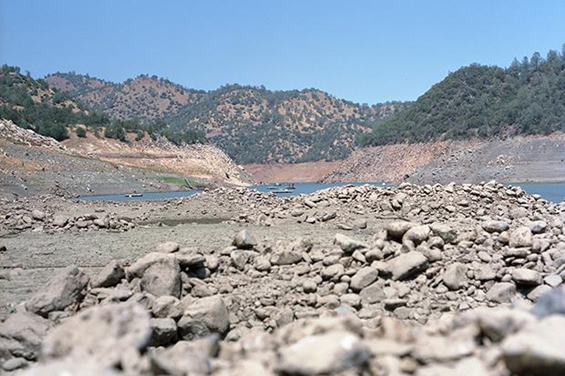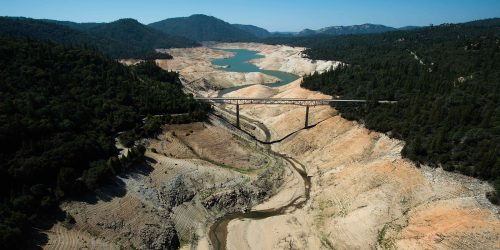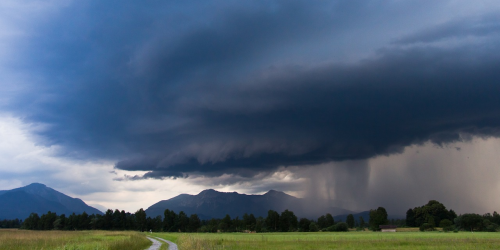In order to address gaps in the understanding, monitoring, and prediction of drought and improve our Nation’s ability to prepare for impacts, NOAA’s Modeling, Analysis, Predictions, and Projections (MAPP) program — in partnership with the National Integrated Drought Information System (NIDIS) — is funding 12 new three-year projects. These competitively-funded projects involve $4.2 million in grants and $1.8 million in other awards (for a total of $6.0 million).

Drought has and continues to cause serious social and economic impacts throughout the United States. According to the NOAA National Centers for Environmental Information, a single drought event costs the U.S. about $9.4 billion on average1. From agricultural and drinking water supplies to infrastructure, health, ecosystems, and energy costs, drought negatively affects myriad sectors and people. Through the new National Drought Resilience Partnership, as well as NIDIS and its regional Drought Early Warning Systems (DEWS), NOAA, working with interagency and academic colleagues, strives to improve the country’s capacity to manage drought-related risks and mitigate impacts by providing the best available information and tools. Building on the NIDIS example, an emerging international effort has begun to develop similar capabilities through a Global Drought Information System. In addition, NOAA’s Drought Task Force (DTF) has contributed significantly to the goals of the World Climate Research Program’s Climate Variability and Predictability and Global Energy and Water Cycle Exchanges programs.
The newly selected projects will build on the previous NOAA DTFs’ accomplishments during a third term of the Drought Task Force, which will be active from 2017 to 2020. Research topics will focus on improving understanding of sources of predictability, advancing the capability to model processes related to drought, developing new national monitoring and forecast products, and advancing operational drought monitoring and prediction systems.
The 12 new projects2 to be funded by the MAPP Program in 2017 are:
- An Objective Seasonal Drought Outlook for the Conterminous United States
- Lead Investigator: Dennis Lettenmaier (University of California, Los Angeles)
- Co-Investigator: Kingtse Mo (NOAA/CPC)
- Representing Human-Managed Influences through Thermal Product Data Assimilation in NLDAS: Impacts on the Terrestrial Water Budget and Drought Estimation
- Lead Investigator: Christa Peters-Lidard (NASA Goddard)
- Co-Investigators: David Mocko (NASA GSFC), Chris Hain (NASA Marshall Space Flight Center), Sujay Kumar (NASA GSFC), Youlong Xia (NOAA/EMC)
- Collaborators: Martha Anderson (USDA-ARS), Xiwu Zhan (NOAA/NESDIS)
- Collaborative Research: Toward Operational Predictions of Persistent Drought Driven by Multi-Year La Nina
- Lead Investigator: Yuko Okumura (University of Texas)
- Co-Investigators: Pedro DiNezio (University of Texas), Clara Deser (NCAR)
- Understanding Predictability of Flash Drought Over the United States
- Lead Investigator: Hailan Wang (Science Systems and Applications Inc.)
- Co-Investigator: Randal Koster (NASA Goddard)
- Understanding the Sources of U.S. Drought Predictability Using Seasonal Reforecasts of Sixty Years (1958-2017) Initialized with Multiple Land Analyses
- Lead Investigator: Bohua Huang (GMU/COLA)
- Co-Investigators: Chul-Su Shin (GMU/COLA), Paul A. Dirmeyer (GMU/COLA), Arun Kumar (NOAA/CPC)
- Exploring Process and Scale Dependencies on the Predictability and Variability of Drought in the United States
- Lead Investigator: Michael Barlage (NCAR/Research Applications Laboratory)
- Co-Investigators: Zong-Liang Yang (University of Texas at Austin), Fei Chen (NCAR), David Gochis (NCAR)
- Clarifying the Influence of the Multiscale Coupling Between Land Surface, Shallow and Deep Convection, and Large-Scale Circulation on the Predictability of Summer Drought over the U.S. Great Plains
- Lead Investigator: Rong Fu (University of Los-Angeles)
- Drought Onset and Termination Across North America: Mechanisms and Predictability
- Lead Investigator: Richard Seager (Columbia University)
- Co-Investigators: Mingfang Ting (Columbia University), Naomi Henderson (Columbia University), Dong Eun Lee (Columbia University)
- Biosphere-Atmosphere Regulations of Droughts Assessed Using Microwave and Solar-Induced Fluorescence Observations and Improved Plant Water Stress Representation
- Lead Investigator: Pierre Gentine (Columbia University)
- Co-Investigators: Alexandra Konings (Stanford University), Rongqian Yang (NOAA Environmental Modeling Center), Michael B. Ek (NOAA Environmental Modeling Center)
- Developing an Automated Weekly Probabilistic and Categorical Drought Outlook Based on U.S. Drought Monitor and Ensemble Prediction
- Lead Investigator: Lifeng Luo (Michigan State University)
- Co-Investigator: Youlong Xia (NOAA Environmental Modeling Center)
- Developing National Soil Moisture Products to Improve Drought Monitoring
- Lead Investigator: Trent Ford (Southern Illinois University)
- Co-Investigators: Steven Quiring (Ohio State University), Jessica Lucido (USGS)
- Improving the Drought Monitoring Capabilities of Land Surface Models by Integrating Bias-Corrected, Gridded Precipitation Estimates
- Lead Investigator: Brent McRoberts (Texas A&M University)
- Co-Investigators: Steven Quiring (Ohio State University), Brad Zavodsky (NASA SPoRT), John Nielsen-Gammon (Texas A&M University), Jonathan Case (ENSCO, Inc.)
1 https://www.ncdc.noaa.gov/billions/summary-stats
2 At the time of publication, all awards may not have been accepted by recipient institutions





